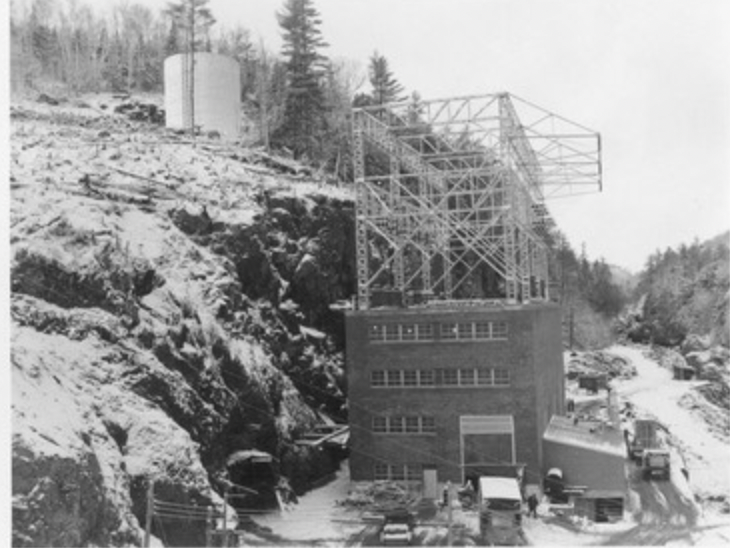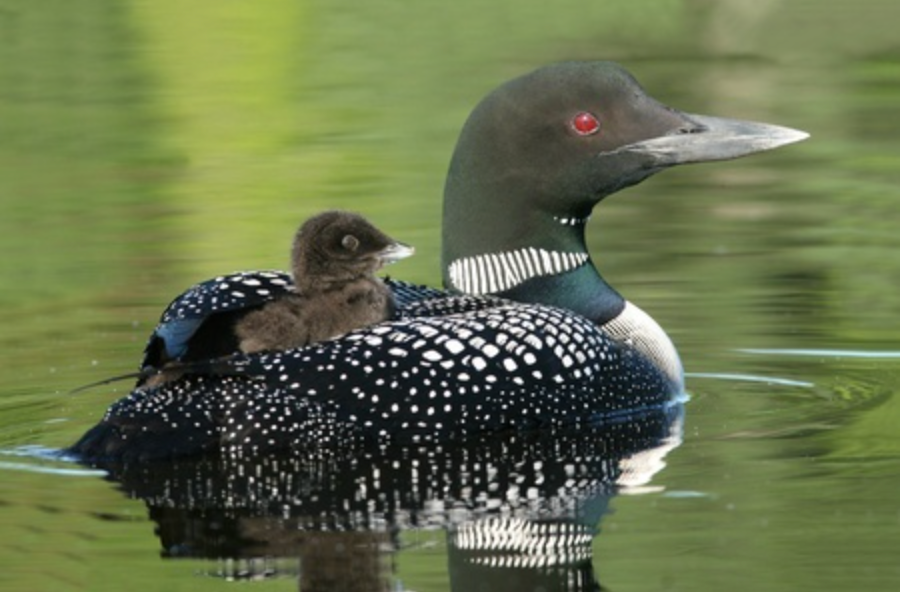Conservation of the Salmon, Trout, Loon and other species dependent on the waters of the West Branch of the Penobscot River

The Great Northern Paper built the Millinocket mill in 1900. A series of dams and hydro facilities were built to power the mill including McKay Station. Water levels were very stable, often not changing, for weeks at a time.
By the 1990’s the paper industry began to struggle, GNP began to sell power back to the grid in 2001. With the ability to sell power, Great Northern began to manage water flows based on prices and electricity demand. There was no high water in early August, when demand was greatest.
Most recently McKay was acquired by Brookfield Renewable. Brookfield began to swing water levels dailey based on power rates and demand. We believe these frequent, dramatic changes in water level are harmful to the food chain.
Food Chain
All energy comes from the sun. Plants use the sun to drive photosynthesis, creating sugar. Nymphs consume plant life. Fish eat the nymphs, loons and eagles eat the fish. At each level there is about a 10% energy loss. So, 20,000kcal of energy in plant mass consumed by nymphs, becomes 2,000kcal of energy when those nymphs are consumed by fish, and diminishing further to 200kcal when the fish are consumed by a loon, or eagle. Any disruption of the energy flow is magnified at the top. Impacts at all levels are devastating.
Insects
Many insects, even mosquitoes, start as nymphs on the river bottom. A drop in water levels can reveal over 10 feet of river bottom at Big Eddy, killing all insect life exposed. When the water goes out like the tide, night after night, a new batch of nymphs is killed, nightly.
Fish
The fish (including salmon, trout, smelts) within the West Branch, are impacted by changing water levels. Decreased insect life means less food. Leaving fewer and smaller fish.
Of greater concern is the minimum flow level for the West Branch of the Penobscot. Under the current license the minimum flow, “fish flow” is 400 cfs. If McKay Station is struck by lightning, the power station shuts down all three turbines and the river drops to 400 cfs.
A study was conducted by Brookfield on October 5th of 2022, to study the possible fish strandings during periods when the river is dewatered rapidly. Stephen G. Heinz, of the Maine TU Council, participated in this study and reported over 200 stranded, dead and dying fish, including wild trout and landlocked salmon, along with a multitude of insect life. If Brookfield is allowed to continue their ever greater swings in flows, this study shows the devastating impact on the native fish and insect population.

Photo Credit (https://blog.terryhewitt.com/2014/08/12/the-common-loons-love-thompson-lake-and-you-will-too/)
Loons
Within the stretch of river, there are nesting loons found within the Nesowednehunk Dead Water, Abol Dead Water, Compass and River Pond. There are loons on First Debsconeag Lake and others scattered along the river all the way to Ambajejus Lake. Changes in water level impact this entire waterway.
Loons, a federally protected species, do not walk well on land. They build their nest right on the shoreline in the spring. Rising water levels can drown their eggs. When water levels drop, they are unable to reach their nest, and abandon their eggs. Loons require very stable water levels during their nesting season, or their eggs will not survive.
Couple this with the impact of loon fishing pressure, and it becomes clear Brookfields current water management strategy could decimate the loon population within the West Branch Corridor.
Anglers
Trout Unlimited has been forming a coalition to help with the fight to stabilize water levels. They represent the Maine anglers, and camp owners who love the West Branch. These waters are the most reliable landlocked salmon and native brook trout fishing in Maine. Many anglers spend their much needed, out of state money and support the local economy. Please consider joining your local chapter of Trout Unlimited, their work to save wild trout and fishing waters everywhere, is worth every penny.
Relicensing
The Ripogenus Dam, along with McKay Station, are due for relicensing, a process that occurs only every 30-50 years. If we are going to protect this stretch of river from the modern approach to water management, we must act now. For most of us, this is a once in a lifetime opportunity to have our voices heard by FERC. Consider commenting, and letting FERC know your concerns, that we believe studies need to be done to determine the full impact Brookfield’s current and future water practices. Studies should include impacts on insects, fish and loons. This battle is not just for the fish, but the balance of the entire ecosystem of the West Branch.
I believe good studies will show that stability is best practice in flow management.